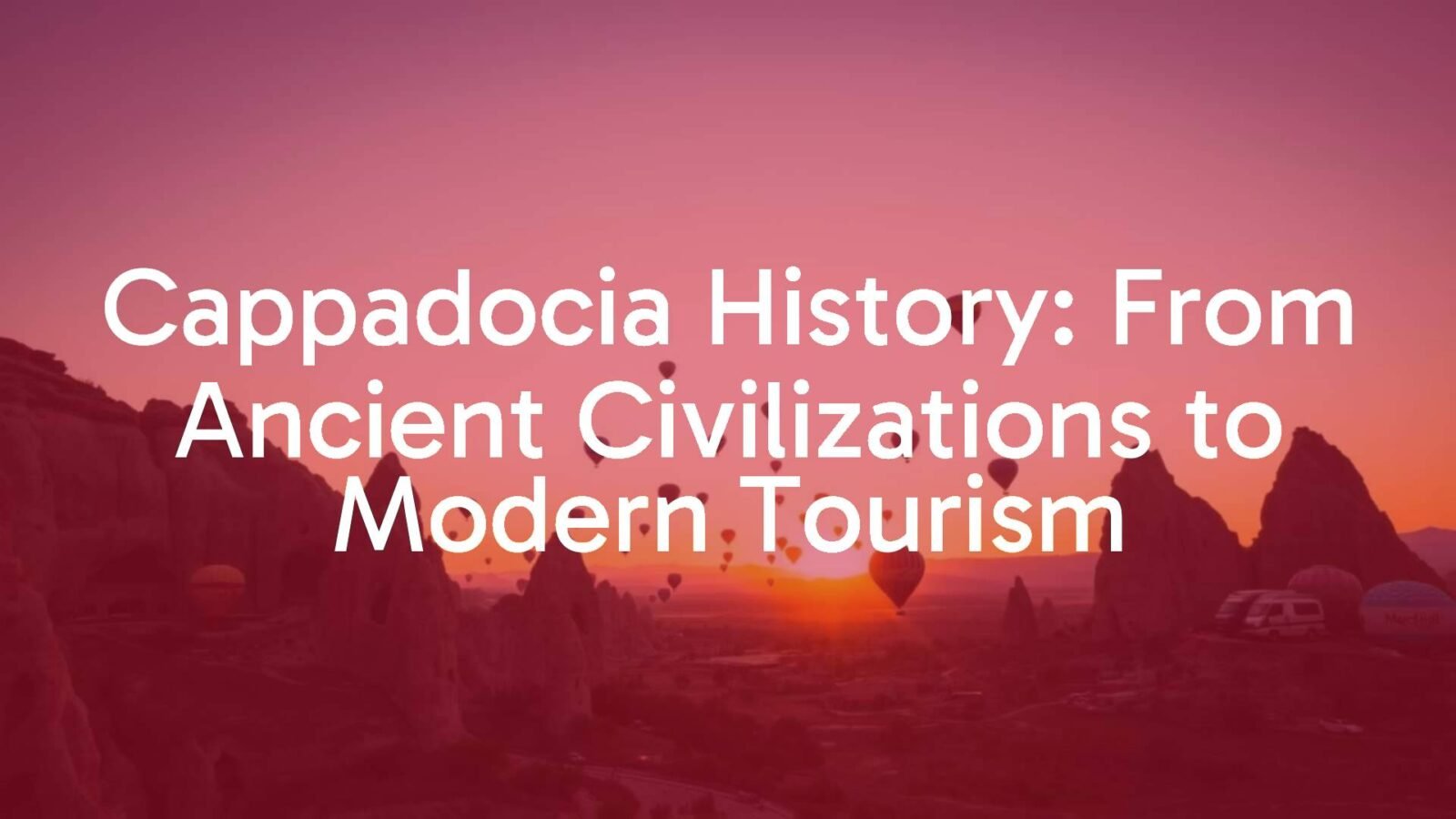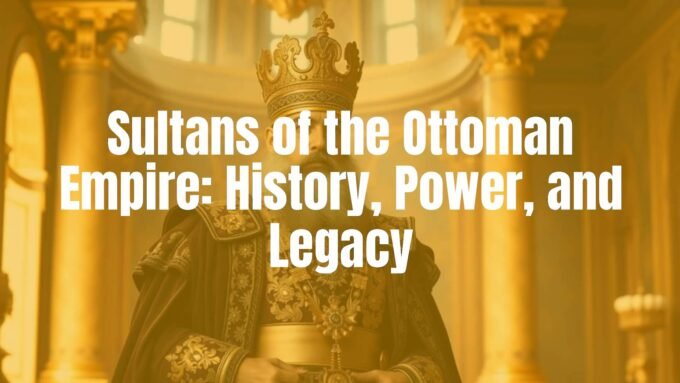Cappadocia, located in central Anatolia, Turkey, is a region known for its deep history that goes back thousands of years. Its landscape is famous for unusual rock shapes, valleys, and ancient cave homes, but its story includes much more than scenery. Here, natural forces have worked alongside people’s efforts, creating a place where history and geology are closely connected.
Cappadocia’s position made it a key location on old trade routes that linked the Middle East, Europe, and the Mediterranean. Because of this, many cultures, armies, and ideas crossed through or settled here, each group adding something new. Over time, both natural changes and the actions of different peoples have shaped Cappadocia, making it a unique part of world history.

Why Is Cappadocia Important Historically?
Cappadocia has always been important because it sits where different ancient empires met and mixed. Its soft volcanic rock made it easy for people to dig caves for homes, churches, and entire underground cities. These caves kept people safe during attacks and gave cover for those who faced danger because of their beliefs.
People have lived in Cappadocia since the Stone Age. Different empires, from the Hittites to the Romans and Ottomans, left behind buildings, art, and traditions. This mix of nature and culture makes Cappadocia special and a valuable place in the world’s history.
Where Does the Name “Cappadocia” Come From?
The name “Cappadocia” was first used in ancient times. Old Persian records from leaders like Darius the Great use the name “Katpatuka.” Though some have guessed that it meant “Land of Good Horses,” newer studies suggest it comes from Hittite words meaning “the place below,” probably referring to its position compared to other regions. The Greeks called its people “White Syrians,” showing its roots go deep into Anatolian history.
How Has Cappadocia’s Geography Affected Its History?
- Cappadocia’s high plateaus and volcanic mountains created a tough but useful landscape.
- The soft tuff rock made it easy to build homes and churches underground or in cliffs, giving safety from raiders.
- The land’s weather, with hot summers and cold, snowy winters, pushed people to focus on farming crops like grapes for wine.
- Being at a crossroads for trade made the region rich but also meant it was often invaded or changed by outside influences.
How Did Cappadocia’s Geology Influence Its History?
Cappadocia’s striking rocks were formed millions of years ago by volcanic eruptions. Ash and lava from volcanoes settled, and over time rain and wind turned this soft rock into strange towers called “fairy chimneys.”
People took advantage of this rock, carving out homes, churches, monasteries, and vast underground cities. These spaces provided cool shelter from the summer heat and warmth in the winter, and they became hiding places during times of danger. The geology made it possible for people to survive and keep their traditions in tough times.

Why Are Fairy Chimneys and Rock Formations Significant?
- The soft rock was easy to carve, allowing for unique cave homes and churches.
- Underground cities and cave complexes offered safety from attacks and natural elements.
- These formations created a landscape like no other, blending nature and human creativity.
What Are the Main Historical Periods in Cappadocia?
| Era | Events/Details |
|---|---|
| Paleolithic to Late Bronze Age | Early settlements; rise of the Hittites |
| Hittite Period | Hatti region; key trade center at Kanesh (Kültepe) |
| Phrygian & Persian Rule | After Hittites, ruled by Phrygians, then Persians; spread of Zoroastrianism |
| Hellenistic & Kingdom Era | Influence of Alexander the Great; semi-independence under local kings |
| Roman & Early Christian Era | Provinced by Rome; rise of Christian communities and underground churches |
| Byzantine Era | Growth of monasteries; repeated invasions; Armenian migration |
| Seljuk & Ottoman Period | Islamic influence; Seljuk architecture; integration into the Ottoman Empire |
Which Ancient Peoples Lived in Cappadocia?
Many groups lived in Cappadocia through time. The Hittites were early rulers, as shown by tablets at Kültepe. After their fall, Phrygians and then Persians took over, each leaving religious and cultural marks. Alexander the Great’s conquest brought Greek influence, but local rulers stayed in power for a while, until the Romans finally made Cappadocia a province. Later, Christian, Byzantine, Seljuk, and Ottoman peoples shaped the region.
What Was the Hittite Period Like?
The Hittites made the area part of their kingdom and used it for trade, especially at Kültepe, where ancient tablets reveal details about their lives and deals. The Hittites’ control and culture influenced the region’s language and laid foundations for later civilizations.

How Did Persian Rule Change Cappadocia?
- The Persians set up their own system of rule and brought with them Zoroastrian fire temples.
- Local leaders often kept some control while paying tribute to Persia.
- Even after Persia lost power, its influence lasted in religion and culture.
What Happened During the Kingdom of Cappadocia?
After Alexander, Cappadocia had almost independent kings, starting with Ariarathes I. They balanced influences from Persia and Greece and kept local traditions strong, but eventually the Romans took over.
How Did the Romans and Early Christians Shape Cappadocia?
- Rome turned Cappadocia into a frontline province, defending its eastern border.
- Locals of Persian background and tradition continued for many years.
- Christianity spread and many Christians hid in underground shelters due to Roman crackdowns.
- Cappadocia became famous for producing important early Christian thinkers: the “Cappadocian Fathers.”
Byzantine Period Overview
As part of Byzantium, Cappadocia stayed important for trade and religion. Hundreds of churches and monasteries were carved into the rock, many with colorful paintings. But the region often faced attacks from the east, pushing people to use underground cities for protection. Armenian families also moved in, becoming part of the region’s makeup.

How Did Seljuk and Ottoman Rulers Influence Cappadocia?
- Seljuk Turks took over after the 11th century, spreading Islam and building caravan stops for trade.
- Some Christian traditions continued, but Islamic buildings became common.
- The Ottomans, who controlled the region until the 20th century, developed towns and trade and introduced more mosques and schools.
What Role Did Religion Play?
Religion has always been a big part of life in Cappadocia. Zoroastrian practices came with the Persians, early Christians built cave churches to escape persecution, and Islam became dominant under the Seljuks and Ottomans. Caves and rock shelters were set up as places for worship, learning, and community.
How Did Christianity Take Root?
Christianity arrived early, likely in the 3rd century AD. The Bible’s Book of Acts mentions Cappadocians at Pentecost, hinting at an early group of believers. When Christians faced danger elsewhere, they found safety in Cappadocia’s natural caves. Hidden underground, Christian communities survived, worshipped, and educated others, becoming a center for monastic life and idea-sharing.
Most Famous Churches and Monasteries
- Göreme Open-Air Museum: More than 30 cave churches and chapels, many with colorful wall paintings.
- Ihlara Valley: A scenic canyon filled with carved churches and frescoes.
How Did Islam Change Life Here?
With Turkish rule, Islam became the main religion, though many Christian sites still survived. The building of mosques, religious schools, and trade stations (caravanserais) added to the landscape. Under the Ottomans, Islamic culture grew even more, but both Christian and Islamic histories continued to mix in both buildings and traditions.
What Are Cappadocia’s Most Important Historical Sites?
Cappadocia is home to many ancient and historical spots. Each place, whether underground or on the surface, tells a part of its long story.
Main Underground Cities for Shelter
- Derinkuyu and Kaymaklı: Large, multi-level underground cities with living spaces, food stores, stables, and defenses like stone doors.
- Gaziemir and Ozkonak: Smaller underground complexes with unique features for protection.
These cities were used by Christian communities hiding from Roman forces and, later, from Arab raids.

Historic Towns of Cappadocia
| Town | Main Features |
|---|---|
| Ürgüp | Old volcano-formed rocks, fairy chimneys, Seljuk mausoleums, and history as a defensive hub. |
| Göreme | Monastic center, rock churches, and a landscape of carved pillars. |
| Uçhisar | Castle-like rock formation with ancient rooms and tunnels; great viewing point. |
| Avanos | Long-standing pottery-making town along the Halys River. |
| Ortahisar & Güzelyurt | Rock castles and valleys known for monasteries and old Christian ruins. |

What Has Happened in Cappadocia in Modern Times?
In the 20th century, the founding of modern Turkey led to major changes. A population swap with Greece resulted in many Christian communities leaving, leading to significant cultural shifts. Roads, hospitals, and schools were built, making Cappadocia easier to reach and better to live in.
In 1985, Cappadocia’s sites, especially Göreme, became a UNESCO World Heritage Site. This gave the area world attention, leading to more tourists and investments in hotels, tours, and services. At the same time, there have been efforts to protect Cappadocia’s unique natural and historic sites from damage by large numbers of visitors.
How Does Its History Shape Tourism Today?
Cappadocia’s long and varied past is the reason millions visit each year. The ancient cave churches, fairy chimneys, and vast underground cities pull in visitors who want to see something different and real. People come not just for the views, but to experience stories of survival, faith, and creativity.
- Göreme Open-Air Museum: Offers a look at early Christian art and life.
- Derinkuyu & Kaymaklı: Let people explore underground cities used for hiding and living.
- Uçhisar Castle: A natural rock fort offering wide views of the region.
- Ihlara Valley: Combines nature and churches for hikers and history fans.
- Cave houses and dovecotes: Show how ordinary people used the landscape.
How Are History and Sites Protected?
- UNESCO helps set rules for repair work, new construction, and handling tourists.
- Special projects preserve ancient paintings and fix worn-down structures.
- Visitor numbers are controlled in some places to avoid damage, and locals are taught about conservation.
Local traditions are also kept alive, making sure that Cappadocia’s legacy continues.
Frequently Asked Questions about Cappadocia’s History
What Makes Cappadocia Special Compared to Other Historical Regions?
- Unusual volcanic rock shapes gave people the chance to build uniquely underground, unlike anywhere else.
- Its caves and hidden homes kept people safe and allowed religions to grow secretly.
- All sorts of cultures, from Hittite to Ottoman, used this rocky land in creative ways, showing human adaptability alongside nature’s power.
The close link between landscape and how people survived is what makes Cappadocia completely unique in world history.













Leave a comment